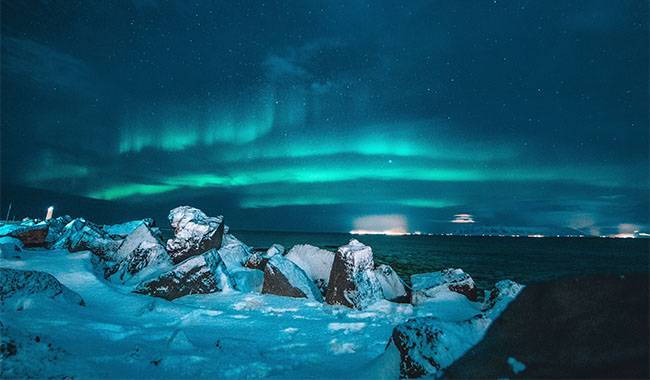
The best time to travel to Iceland depends on your travel plans, not just the temperature. From May to September, the weather is milder, but the winter months are perfect for seeing the Northern Lights. In this article, we will learn with the website lcnoutdoors.com the best time to travel to Iceland.
When to Go to Iceland
When planning a trip to the land of ice, it’s important to consider not only the weather but also the time of year you’ll be traveling. We will analyze the different seasons and you will know what is the best time to travel to Iceland.
Travel in Spring
If you haven’t decided when to go to Iceland, in April and May, you can enjoy great temperatures, although there might still be some snow. Flowers are starting to bloom and migratory birds are returning.
Spring temperatures range from 32-50 °F (0-10°C), depending on the area you visit. It is also a good time to see the Aurora Borealis and the temperatures are better than in winter.
Since this is not the high season, you can also find more convenient and cheaper accommodation. You can take more short trips and flights are cheaper. For all these reasons, we think spring is one of the best times to travel to Iceland.
Travel in Summer
Summer is the time when most tourists like to visit the country. Temperatures are very pleasant and the famous midnight sun phenomenon takes place. Be aware, however, that summer is the peak tourist season, and airfare and accommodations are more expensive.
You will find that some areas of the country are inaccessible due to the thaw. The advantage of visiting Iceland in the summer is that you have more hours of sunshine. But precisely because there are more hours of light, 24 hours a day, you will definitely want to bring a mask in your luggage or you won’t be able to sleep at night.
For photographers, summer in Iceland is paradise, offering amazing light and color transitions between sunrise and sunset. It is certainly the best time to capture the incredible Icelandic nature. And because of the long periods of clear skies, you can make better use of this time to visit more parts of the country.
Conversely, summer is still the best time for many people to visit Iceland, as it also hosts many open-air music festivals. You can set up camp or reach the Landmannalaugar Valley, which is inaccessible in winter.
Travel in Autumn
From the end of August to the end of October, you can travel around Iceland at your leisure. During this time, the best month in September, when you can not only enjoy the good weather but also find more accommodation at the best prices.
You will also have the opportunity to see the Aurora Borealis and experience the first snowfall. The temperatures are very similar to those of spring, so you can visit many short trips and remote areas of the Land of Ice.
To make it even more interesting, you should know that Iceland’s fall colors will give you a unique spectacle. In addition, September is the month with the least amount of rainfall in the country. There is no doubt that this month is the best time to travel to Iceland.
Traveling in Winter
If the cold doesn’t scare you, winter is the best time to visit Iceland because that’s when you’re most likely to see the Northern Lights. From the end of August to April, this light can be observed from 10 p.m. to midnight.
Probably the biggest drawback of traveling to this icy country in winter is that you have to be prepared for snowstorms. If you want to experience the real Iceland for yourself, this is a risk you must consider.
On the other hand, depending on the region, Iceland isn’t as cold as you might think. The average winter temperature in Reykjavik is 33-35 °F (1-2 °C). In the coldest months, it sometimes drops to 14 °F (-10 °C).
If you visit the northern part of the country, such as the city of Akureyri, you can expect temperatures of 32 °F (0 °C) and a lot of snowfall.
The Icelandic fjords in the west of the country and many villages in the north may be occasionally isolated from the environment during the winter months. However, the average winter temperature in Iceland is not as cold as in New York.
Therefore, winter may also be the best time to travel to Iceland. In addition, you can visit the breathtaking ice caves and glaciers that you don’t see in the summer.
Now that you know what to expect in Iceland at any time of the year, prepare your trip and discover a country you’ll want to return to time and time again.